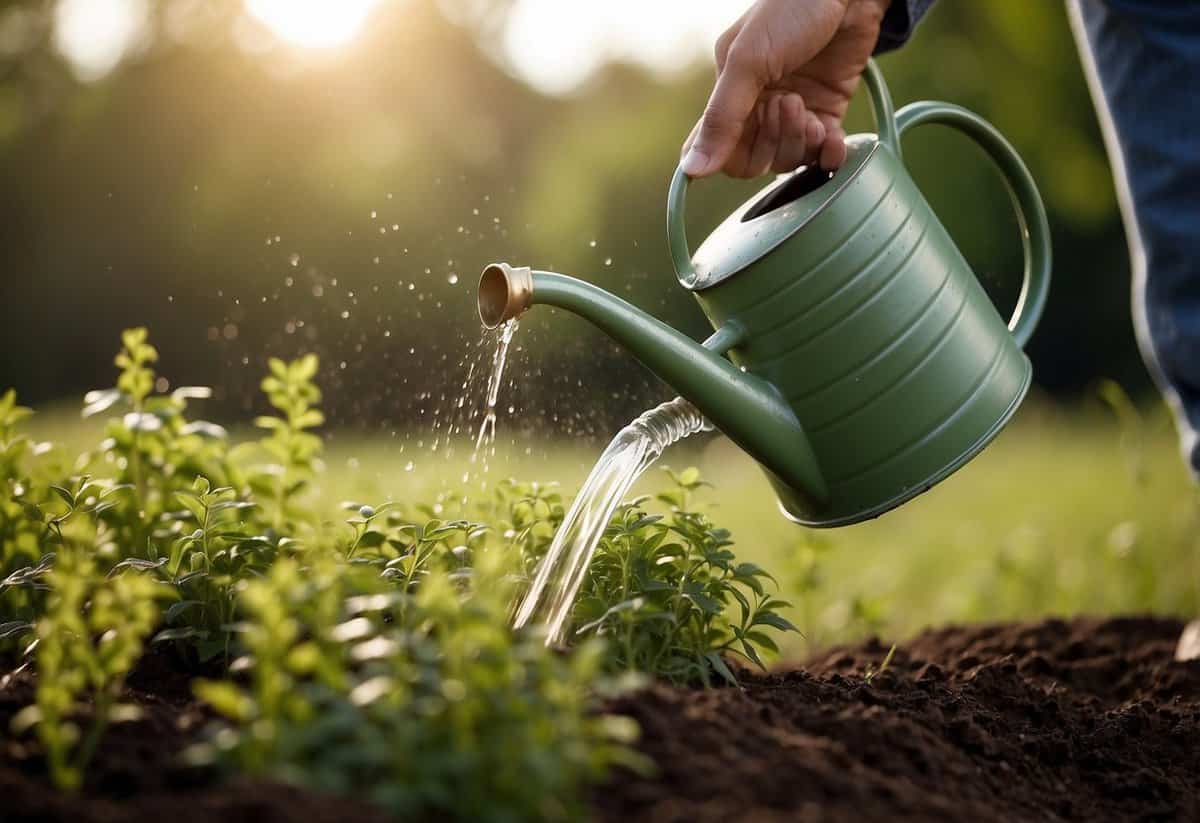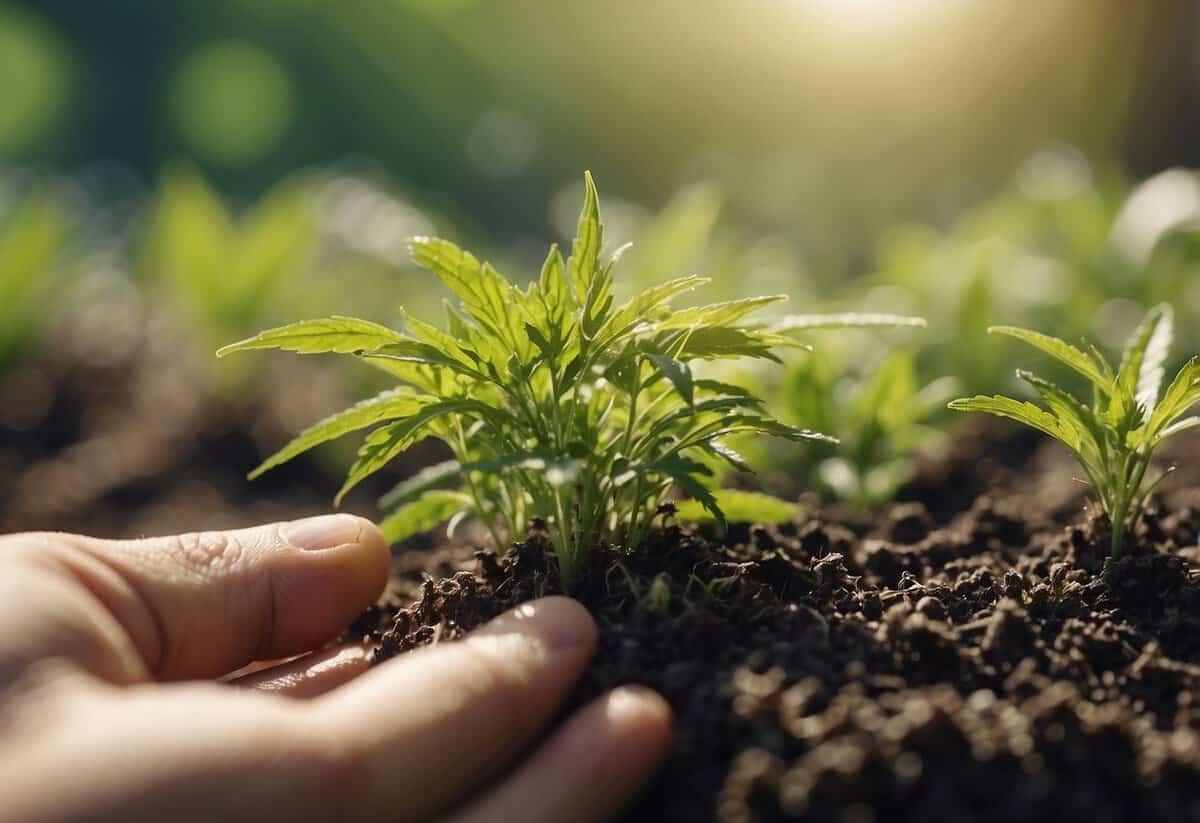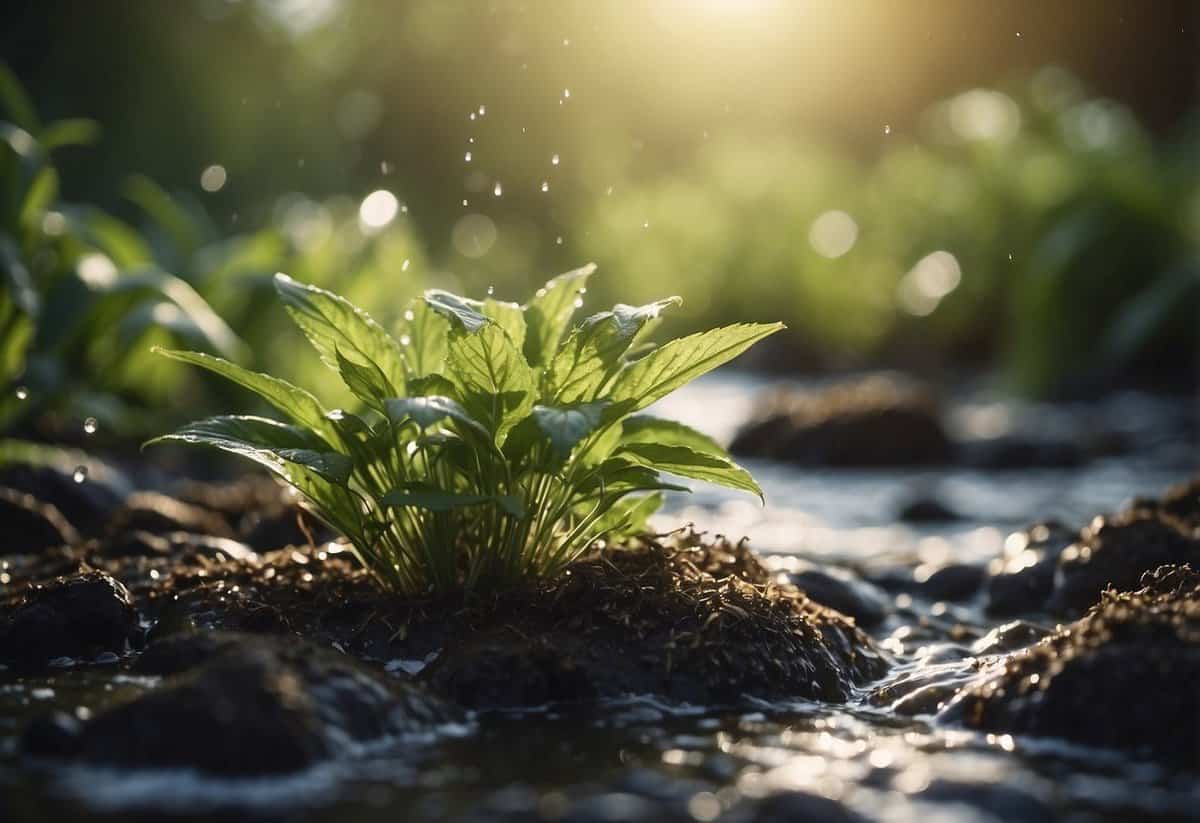Watering and Weed Tips: Keep Your Garden Thriving
Watering cannabis plants is a crucial step in ensuring their healthy growth and development. As you start your journey in growing weed, understanding the best techniques for watering can make all the difference. It’s essential to know how much water your plants need and when to provide it.

Proper watering techniques can prevent common issues like root rot and nutrient deficiencies. By learning a few simple tips and tricks, you can keep your cannabis plants thriving. This article aims to help you find the right balance and provide useful advice on watering and maintaining your weed plants.
1) Water Early Morning

Watering your plants early in the morning is the best time for them. During these hours, temperatures are cooler, and the wind is usually calm. This helps water soak into the soil rather than evaporate. You can check out more about this on Royal Queen Seeds.
Watering early also helps prevent disease. This is because the plants dry quicker than if you watered them in the evening. Moist leaves overnight can lead to issues like mildew. Morning watering ensures your plants get the hydration they need without the risk of prolonged dampness.
2) Deep Root Watering

Deep root watering is essential for the healthy growth of trees and shrubs.
It helps plants develop strong root systems, making them more resilient during dry spells. You should aim to water deeply rather than frequently. This encourages roots to grow deeper into the soil.
Using techniques like drip irrigation or soaker hoses can help you deliver water efficiently to the root zone. Keep the soil moist but not waterlogged to avoid root rot.
Consider using tools like the Varimorus deep waterer to ensure water reaches the roots effectively. This tool is designed to help plants thrive by promoting better water absorption.
3) Mulch to Retain Moisture

Using mulch in your garden is a great way to keep the soil moist. It helps in reducing evaporation. This means plants get more water even on hot days.
Organic compost is an excellent option. It’s rich in nutrients and improves soil structure. You can also try using leaves, grass clippings, or wood chips. Each type of mulch has its own benefits for moisture retention.
Apply a layer of 2-3 inches for best results. This also helps in suppressing weeds. You’ll save water, and your plants will thrive.
4) Remove Weeds Regularly

Weeds can quickly take over your garden if not managed. It’s best to pull them when the soil is wet, like after a rain. Wet soil makes it easier to get the roots out.
Don’t wait too long. Regular weeding prevents seeds from spreading. Pull weeds before they mature. Apply mulch to help suppress weed growth and reduce the need for frequent weeding.
Grab weeds at the base and pull gently to remove the entire root. This approach is effective and helps keep your garden healthy and weed-free.
5) Hand-Pull Small Weeds

Hand-pulling small weeds can save you time later. It’s easier to remove weeds when they’re young. They have smaller roots that come out quickly.
Try pulling weeds after it rains. Wet soil makes it easier to pull out the entire weed, roots and all. If it’s dry, soak the soil with a hose first.
Use tools like a hook neck tool or angled hand hoe to help. These can dig out weeds without disturbing nearby plants. Also, consider wearing knee pads to stay comfortable while you work. Remember to take breaks and drink water to stay hydrated.
6) Use Organic Weed Killer

Organic weed killers can be effective and safe for your garden. Boiling water is a simple option. Pour it directly on weeds to kill them.
Another method is using table salt. Just sprinkle a pinch at the base of each weed.
Vinegar mixed with dish soap and salt also works well. You can find the recipe here.
7) Install Drip Irrigation

Drip irrigation is a great way to water your garden and save water. It slowly drips water directly to the roots of your plants.
To start, you need to connect the header to your water source. You can use a garden hose for this.
Punch holes in the main line for the emitters with an emitter tool. Place the emitters near your plants. They should be no more than a foot away.
Secure the drippers in the soil using stakes. This helps to keep them in place.
Remember to flush the system by running water through it. This clears any debris.
8) Mulch to Suppress Weeds

Using mulch is a great way to keep weeds from taking over your garden. Mulch acts as a barrier to block sunlight, which helps prevent weed seeds from sprouting.
To be effective, you should apply mulch in a layer that is at least 2 to 3 inches thick. This will ensure that the sunlight is properly blocked.
In addition to preventing weed growth, mulch also helps retain moisture in the soil, which is beneficial for your plants. You will need to replenish mulch as it decomposes or gets blown away.
If you do spot weeds in your mulch, pull them out by the roots to keep them from coming back.
9) Rotate Crops Annually

Rotating your crops each year is a smart way to keep your garden healthy. By changing the location of your plants, you prevent soil-borne pests and diseases from building up.
Crop rotation also helps in maintaining soil nutrients. Certain plants add specific nutrients back to the soil, benefitting the crops that follow.
To rotate your crops, divide your garden into sections. Each year, plant different vegetable families in each section. For instance, if you planted tomatoes in one section this year, plant beans or carrots there next year. This simple practice can lead to a more productive garden.
10) Water at Soil Level

When you water your weed plants, always aim for the soil, not the leaves.
Soaking the leaves can lead to mold and other problems. Plants take up water through their roots, so it’s best to keep the water where the roots are.
Using a drip system or watering can is very effective.
For more tips, you can check out this guide.
Understanding Watering Needs

Watering cannabis plants properly is crucial for their growth and health. Different types of cannabis plants have varied water needs, and soil type can impact how well water is retained.
Types of Plants and Their Water Requirements
Cannabis plants in different growth stages require different amounts of water.
Seedlings need minimal water. Use a spray bottle to keep the soil moist without overwatering, as their roots are delicate.
Vegetative stage plants need more water. Water deeply when the top inch of soil is dry. Ensure water reaches the roots to encourage deep root growth.
Flowering stage plants require a balance. Overwatering can cause mold, so it’s important to let the soil dry slightly between waterings.
Soil and Its Impact on Water Retention
Soil type affects how often you need to water. Sandy soil drains quickly but may need frequent watering. Loamy soil is ideal as it retains moisture well and provides good drainage.
Add organic matter like compost to improve soil structure and water retention. Check soil moisture by sticking your finger an inch deep. If it’s dry, it’s time to water.
Using the right soil mix ensures that your cannabis plants get the water they need without the risk of overwatering.
Effective Watering Techniques

Proper watering techniques are crucial to maintaining healthy plants. These techniques include choosing the right time to water, recognizing signs of under and overwatering, and using mulch to help retain moisture.
Best Time of Day to Water Plants
It’s best to water your plants early in the morning. The cooler morning temperatures reduce evaporation, which means more water reaches your plants’ roots. This allows the plants to absorb enough water before the heat of the day.
Watering in the morning also prepares plants for the intense sunlight, reducing the risk of burning. If you can’t water in the morning, the next best time is late afternoon. This still allows plants to dry a bit before nighttime, reducing the risk of mold and fungal growth.
Signs of Overwatering and Underwatering
Knowing the signs of overwatering and underwatering helps you care for your plants better. Overwatered plants often have yellowing leaves, root rot, and stunted growth. You may also notice wet soil that doesn’t dry out between waterings.
On the other hand, underwatered plants will have wilted, dry, and crispy leaves. The soil will feel dry and hard. To prevent either issue, check the soil moisture regularly. Stick your finger an inch into the soil; if it feels dry, it’s time to water. If it’s still moist, wait a bit longer.
Utilizing Mulch to Maintain Moisture
Mulching is an effective way to maintain soil moisture for your plants. Applying a layer of mulch around your plants helps retain soil moisture by reducing evaporation. It also keeps the soil temperature regulated, which is beneficial for plant roots.
Organic mulches like straw, leaves, and compost break down over time, adding nutrients to the soil. In addition to retaining moisture, mulch can also suppress weed growth, making your gardening efforts more manageable. Make sure to apply 2-3 inches of mulch around your plants for the best results.
Weed Management Tips

Getting rid of weeds is important for keeping your lawn healthy. You need to know how to recognize weeds, stop them from growing, and remove them safely.
Identifying Common Weeds
Common weeds in lawns include dandelions, crabgrass, and clover. Dandelions have bright yellow flowers and deep taproots. Crabgrass spreads low to the ground with wide leaves. Clover is easy to spot with its three-leaf clusters and small white or pink flowers.
Learning to identify these weeds helps you take action quickly. Watch your lawn regularly so you can spot and deal with weeds before they spread too much.
| Weed Type | Identifying Features |
|---|---|
| Dandelions | Yellow flowers, deep taproot |
| Crabgrass | Low-growing, wide leaves |
| Clover | Three-leaf clusters, white/pink flowers |
Preventive Measures for Weed Control
Preventing weeds is easier than removing them. One way to do this is by using mulch. Mulch helps stop weed seeds from sprouting by blocking sunlight. It also keeps the soil moist and cool.
Another tip is to mow your lawn at the right height. During hot, dry periods, raising your mowing height to 2.5 to 3 inches can help. This taller grass can shade out weed seeds and make it harder for them to grow. Water your lawn deeply and infrequently to foster healthy grass with deep roots, making it harder for weeds to establish.
Safe and Eco-Friendly Weed Removal Methods
When removing weeds, try to use methods that are safe for the environment. One way is to pull weeds by hand. Use a sharp knife with a narrow blade to cut through the roots of weeds like dandelions. This leaves the soil undisturbed, reducing the chance for new weeds to sprout.
For larger areas, consider eco-friendly sprays made from vinegar or other natural ingredients. These can be effective without harming the soil or other plants. Keep in mind that weed seeds can remain dormant for years, so consistent care is key.
With these tips, you can keep your lawn healthy and weed-free.







